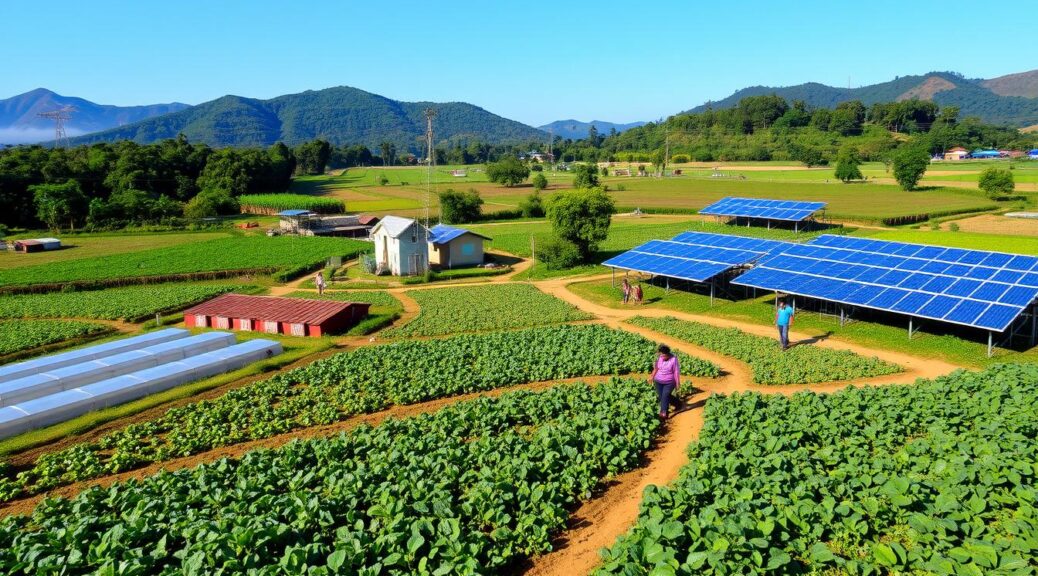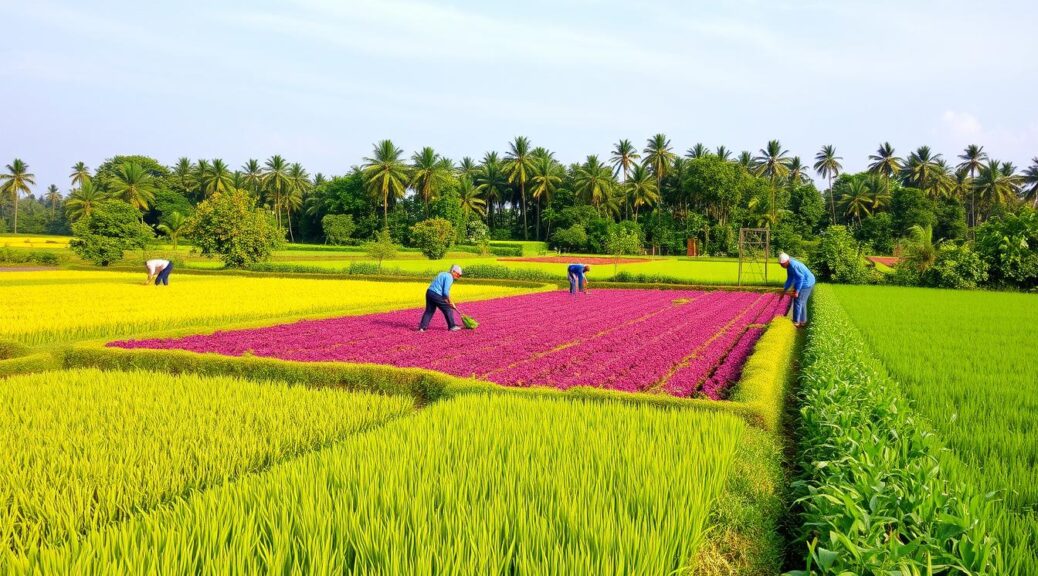Sri Lanka Unveils Climate-Smart Agriculture Investment Plan
Sri Lanka has launched its first Climate-Smart Agriculture Investment Plan. This plan aims to strengthen farming against climate change impacts. It’s funded by the Green Climate Fund and led by the UN’s Food and Agriculture Organization.
The plan will give farmers sustainable practices and tools. These will help them deal with rising temperatures and extreme weather. The goal is to lessen the harmful effects of climate change on agriculture.
Sri Lanka is one of the top 10 countries at risk from climate change. This ranking comes from the Global Climate Risk Index. Without action, crop yields could drop by 10-12% in dry and intermediate zones.
The plan is a key step towards a stronger future for Sri Lankan farmers. It brings together experts from various fields to create effective strategies. These strategies will match Sri Lanka’s development goals.
The plan promotes ways to reduce climate change effects. It also teaches farmers how to adapt their methods. This knowledge will help them face the challenges of a changing climate.
FAO and Green Climate Fund Collaborate to Enhance Agricultural Resilience
The FAO and GCF are teaming up to boost climate-resilient food systems in Sri Lanka. This effort aims to improve agricultural resilience and support low-emission farming practices. It ensures food security for the growing population while promoting sustainable agriculture.
The FAO predicts food production must increase by 60% to feed 9 billion people by 2050. This initiative is a crucial step towards meeting that goal. It addresses both current and future food security challenges.
Innovative Investment Mechanisms to Bridge Farmers and Investors
The FAO-GCF partnership is creating new ways to connect farmers with investors. They’re attracting private sector funding and green investment initiatives. This helps farmers adopt climate-smart agriculture practices and access needed resources.
Similar projects have shown great success. For example, agroforestry systems on Mount Kilimanjaro increased farmers’ incomes by 25%. This was achieved through coffee cultivation, demonstrating the potential of these investments.
Promoting Youth Entrepreneurship in Agriculture
The collaboration focuses on getting youth involved in agriculture. They work with government bodies, private sector, and academia to create opportunities. This helps young people contribute to low-emission farming and climate-resilient food systems.
Youth involvement ensures long-term sustainability of Sri Lanka’s agricultural sector. It also boosts the nation’s economic growth and stability. This approach addresses both present and future agricultural needs.
Climate-Smart Agriculture Investment Plan Launched to Combat Climate Change
Sri Lanka has launched its Climate-Smart Agriculture Investment Plan to tackle climate change challenges. This initiative, backed by the Green Climate Fund and FAO, aims to strengthen the agricultural sector’s resilience.
Sri Lanka ranks among the top ten countries most vulnerable to extreme weather events. Without proper measures, dry and intermediate zones could face a 10-12% yield reduction in agriculture.
The plan involves various stakeholders, including government bodies, private sector, and academia. It aims to develop innovative investment mechanisms for Sri Lanka’s agricultural landscape. The goal is to connect farmers with investors for climate-smart interventions.
The global agrifood system currently emits one-third of all emissions. Food systems consume about 70% of fresh water resources. Global food demand is expected to rise to feed 9.7 billion people by 2050.
The launch workshop is the first of many planned consultations. Sri Lanka is taking proactive steps to equip its agricultural sector for adaptation and resilience. This approach will help ensure food security while reducing agriculture’s environmental impact.
Key Components of Sri Lanka’s Climate-Smart Agriculture Strategy
Sri Lanka’s Climate-Smart Agriculture Investment Plan aims to boost agricultural resilience and fight climate change. The $140 million plan promotes sustainable farming, ecosystem restoration, and environmental conservation. It focuses on low-emission agriculture, climate-resilient food systems, and attracting green investments.
The plan targets over 470,000 smallholder farmers in Sri Lanka’s dry zone. It covers 11 administrative districts and six provinces. The project is funded through a six-year Investment Project Financing Credit.
Funding sources include $125 million from IDA Transitional Credit and $15 million from other sources. The plan allocates $42 million for agriculture production and marketing. It also designates $92 million for water management and $6 million for project oversight.
Agroforestry is a key priority, integrating trees into farmland to boost ecosystem services. This practice enhances biodiversity and carbon sequestration. Agroforestry helps farmers adapt to climate change by providing shade and reducing soil erosion.
The plan supports agroforestry adoption through training and financial incentives. A Project Management Unit within the Ministry oversees implementation. A National Project Steering Committee provides strategic guidance and coordination.
Monitoring and evaluation are crucial to assess the plan’s outcomes. These measures ensure effective implementation of the action plan.




